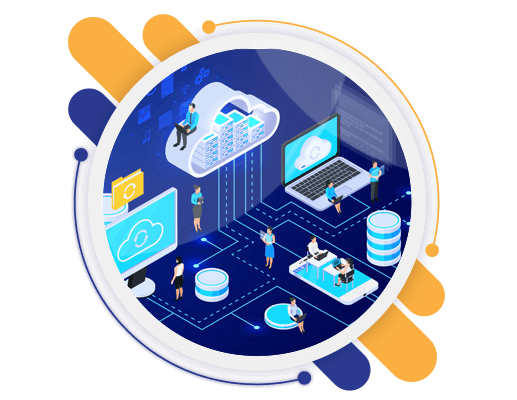Domain 1: Design Secure Architectures
Task Statement 1: Design secure access to AWS resources.
Knowledge of:
- Access controls and management across multiple accounts
- AWS federated access and identity services (for example, AWS Identity and Access Management [IAM], AWS Single Sign-On [AWS SSO])
- AWS global infrastructure (for example, Availability Zones, AWS Regions) AWS security best practices (for example, the principle of least privilege)
- Applying AWS security best practices to IAM users and root users (for example, multi-factor authentication [MFA])
- Designing a flexible authorization model that includes IAM users, groups, roles, and policies
- Designing a role-based access control strategy (for example, AWS Security Token Service [AWS STS], role switching, cross-account access)
- Designing a security strategy for multiple AWS accounts (for example, AWS Control Tower, service control policies [SCPs])
- Determining the appropriate use of resource policies for AWS services
- Determining when to federate a directory service with IAM roles
Task Statement 2: Design secure workloads and applications.
Knowledge of:
- Application configuration and credentials security
- AWS service endpoints
- Control ports, protocols, and network traffic on AWS
- Secure application access
- Security services with appropriate use cases (for example, Amazon Cognito, Amazon GuardDuty, Amazon Macie)
- Threat vectors external to AWS (for example, DDoS, SQL injection) Skills in:
- Designing VPC architectures with security components (for example, security groups, route tables, network ACLs, NAT gateways)
- Determining network segmentation strategies (for example, using public subnets and private subnets)
- Integrating AWS services to secure applications (for example, AWS Shield, AWS WAF, AWS SSO, AWS Secrets Manager)
- Securing external network connections to and from the AWS Cloud (for example, VPN, AWS Direct Connect)
Task Statement 3: Determine appropriate data security controls.
Knowledge of:
- Data access and governance
- Data recovery
- Data retention and classification
- Encryption and appropriate key management Skills in:
- Aligning AWS technologies to meet compliance requirements
- Encrypting data at rest (for example, AWS Key Management Service [AWS KMS])
- Encrypting data in transit (for example, AWS Certificate Manager [ACM] using TLS)
- Implementing access policies for encryption keys
- Implementing data backups and replications
- Implementing policies for data access, lifecycle, and protection
- Rotating encryption keys and renewing certificates
Domain 2: Design Resilient Architectures
Task Statement 1: Design scalable and loosely coupled architectures.
Knowledge of:
- API creation and management (for example, Amazon API Gateway, REST API)
- AWS managed services with appropriate use cases (for example, AWS Transfer Family, Amazon Simple Queue Service [Amazon SQS], Secrets Manager)
- Caching strategies
- Design principles for microservices (for example, stateless workloads compared with stateful workloads)
- Event-driven architectures
- Horizontal scaling and vertical scaling
- How to appropriately use edge accelerators (for example, content delivery network [CDN])
- How to migrate applications into containers
- Load balancing concepts (for example, Application Load Balancer)
- Multi-tier architectures
- Queuing and messaging concepts (for example, publish/subscribe)
- Serverless technologies and patterns (for example, AWS Fargate, AWS Lambda)
- Storage types with associated characteristics (for example, object, file, block)
- The orchestration of containers (for example, Amazon Elastic Container Service [Amazon ECS], Amazon Elastic Kubernetes Service [Amazon EKS])
- When to use read replicas
- Workflow orchestration (for example, AWS Step Functions)
Skills in:
- Designing event-driven, micro service, and/or multi-tier architectures based on requirements
- Determining scaling strategies for components used in an architecture design
- Determining the AWS services required to achieve loose coupling based on requirements
- Determining when to use containers
- Determining when to use serverless technologies and patterns
- Recommending appropriate compute, storage, networking, and database technologies based on requirements
- Using purpose-built AWS services for workloads
Task Statement 2: Design highly available and/or fault-tolerant architectures.
Knowledge of:
- AWS global infrastructure (for example, Availability Zones, AWS Regions, Amazon Route 53)
- AWS managed services with appropriate use cases (for example, Amazon Comprehend, Amazon Polly)
- Basic networking concepts (for example, route tables)
- Disaster recovery (DR) strategies (for example, backup and restore, pilot light, warm standby, active- active failover, recovery point objective [RPO], recovery time objective [RTO])
- Distributed design patterns
- Failover strategies
- Immutable infrastructure
- Load balancing concepts (for example, Application Load Balancer)
- Proxy concepts (for example, Amazon RDS Proxy)
- Service quotas and throttling (for example, how to configure the service quotas for a workload in a standby environment)
- Storage options and characteristics (for example, durability, replication)
- Workload visibility (for example, AWS X-Ray) Skills in:
- Determining automation strategies to ensure infrastructure integrity
- Determining the AWS services required to provide a highly available and/or fault-tolerant architecture across AWS Regions or Availability Zones
- Identifying metrics based on business requirements to deliver a highly available solution
- Implementing designs to mitigate single points of failure
- Implementing strategies to ensure the durability and availability of data (for example, backups)
- Selecting an appropriate DR strategy to meet business requirements
- Using AWS services that improve the reliability of legacy applications and applications not built for the cloud (for example, when application changes are not possible)
- Using purpose-built AWS services for workloads
Domain 3: Design High-Performing Architectures
Task Statement 1: Determine high-performing and/or scalable storage solutions.
Knowledge of:
- Hybrid storage solutions to meet business requirements
- Storage services with appropriate use cases (for example, Amazon S3, Amazon Elastic File System [Amazon EFS], Amazon Elastic Block Store [Amazon EBS])
- Storage types with associated characteristics (for example, object, file, block) Skills in:
- Determining storage services and configurations that meet performance demands
- Determining storage services that can scale to accommodate future needs
Task Statement 2: Design high-performing and elastic compute solutions.
Knowledge of:
- AWS compute services with appropriate use cases (for example, AWS Batch, Amazon EMR, Fargate)
- Distributed computing concepts supported by AWS global infrastructure and edge services
- Queuing and messaging concepts (for example, publish/subscribe)
- Scalability capabilities with appropriate use cases (for example, Amazon EC2 Auto Scaling, AWS Auto Scaling)
- Serverless technologies and patterns (for example, Lambda, Fargate)
- The orchestration of containers (for example, Amazon ECS, Amazon EKS) Skills in: Decoupling workloads so that components can scale independently
- Identifying metrics and conditions to perform scaling actions
- Selecting the appropriate compute options and features (for example, EC2 instance types) to meet business requirements
- Selecting the appropriate resource type and size (for example, the amount of Lambda memory) to meet business requirements
Task Statement 3: Determine high-performing database solutions.
Knowledge of:
- AWS global infrastructure (for example, Availability Zones, AWS Regions)
- Caching strategies and services (for example, Amazon ElastiCache)
- Data access patterns (for example, read-intensive compared with write-intensive)
- Database capacity planning (for example, capacity units, instance types, Provisioned IOPS)
- Database connections and proxies
- Database engines with appropriate use cases (for example, heterogeneous migrations, homogeneous migrations)
- Database replication (for example, read replicas)
- Database types and services (for example, serverless, relational compared with non-relational, in- memory)
Skills in:
- Configuring read replicas to meet business requirements
- Designing database architectures
- Determining an appropriate database engine (for example, MySQL compared with PostgreSQL)
- Determining an appropriate database type (for example, Amazon Aurora, Amazon DynamoDB)
- Integrating caching to meet business requirements
Task Statement 4: Determine high-performing and/or scalable network architectures. Knowledge of: • Edge networking services with appropriate use cases (for example, Amazon CloudFront, AWS Global Accelerator)
- How to design network architecture (for example, subnet tiers, routing, IP addressing)
- Load balancing concepts (for example, Application Load Balancer)
- Network connection options (for example, AWS VPN, Direct Connect, AWS PrivateLink)
Skills in:
- Creating a network topology for various architectures (for example, global, hybrid, multi-tier)
- Determining network configurations that can scale to accommodate future needs Determining the appropriate placement of resources to meet business requirements
- Selecting the appropriate load balancing strategy
Task Statement 5: Determine high-performing data ingestion and transformation solutions.
Knowledge of:
- Data analytics and visualization services with appropriate use cases (for example, Amazon Athena, AWS Lake Formation, Amazon Quick Sight)
- Data ingestion patterns (for example, frequency)
- Data transfer services with appropriate use cases (for example, AWS Data Sync, AWS Storage Gateway)
- Data transformation services with appropriate use cases (for example, AWS Glue)
- Secure access to ingestion access points
- Sizes and speeds needed to meet business requirements
- Streaming data services with appropriate use cases (for example, Amazon Kinesis) Skills in:
- Building and securing data lakes
- Designing data streaming architectures
- Designing data transfer solutions
- Implementing visualization strategies
- Selecting appropriate compute options for data processing (for example, Amazon EMR)
- Selecting appropriate configurations for ingestion
- Transforming data between formats (for example, .csv to .parquet)
Knowledge of:
- Access options (for example, an S3 bucket with Requester Pays object storage)
- AWS cost management service features (for example, cost allocation tags, multi-account billing)
- AWS cost management tools with appropriate use cases (for example, AWS Cost Explorer, AWS Budgets, AWS Cost and Usage Report)
- AWS storage services with appropriate use cases (for example, Amazon FSx, Amazon EFS, Amazon S3, Amazon EBS)
- Backup strategies
- Block storage options (for example, hard disk drive [HDD] volume types, solid state drive [SSD] volume types)
- Data lifecycles
- Hybrid storage options (for example, DataSync, Transfer Family, Storage Gateway)
- Storage access patterns
- Storage tiering (for example, cold tiering for object storage)
- Storage types with associated characteristics (for example, object, file, block)
Knowledge of:
- AWS cost management service features (for example, cost allocation tags, multi-account billing)
- AWS cost management tools with appropriate use cases (for example, Cost Explorer, AWS Budgets, AWS Cost and Usage Report)
- AWS global infrastructure (for example, Availability Zones, AWS Regions)
- AWS purchasing options (for example, Spot Instances, Reserved Instances, Savings Plans)
- Distributed compute strategies (for example, edge processing)
- Hybrid compute options (for example, AWS Outposts, AWS Snowball Edge)
- Instance types, families, and sizes (for example, memory optimized, compute optimized, virtualization)
- Optimization of compute utilization (for example, containers, serverless computing, microservices)
- Scaling strategies (for example, auto scaling, hibernation)
- Configuring appropriate NAT gateway types for a network (for example, a single shared NAT gateway compared with NAT gateways for each Availability Zone)
- Configuring appropriate network connections (for example, Direct Connect compared with VPN compared with internet)
- Configuring appropriate network routes to minimize network transfer costs (for example, Region to Region, Availability Zone to Availability Zone, private to public, Global Accelerator, VPC endpoints)
- Determining strategic needs for content delivery networks (CDNs) and edge caching
- Reviewing existing workloads for network optimizations
- Selecting an appropriate throttling strategy
- Selecting the appropriate bandwidth allocation for a network device (for example, a single VPN compared with multiple VPNs, Direct Connect speed)







